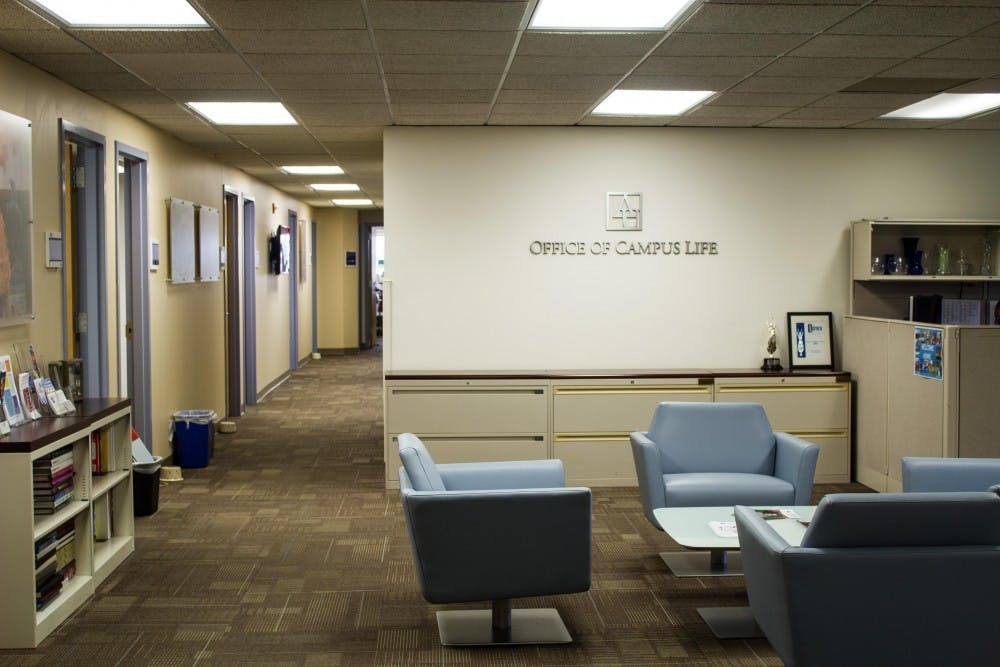Just under nine months after releasing the University’s diversity and inclusion strategy, AU’s top diversity administrator says AU is already seeing progress on the goals laid out in the “Plan for Inclusive Excellence.”
The University announced an official update in the second week of September, highlighting efforts made throughout the past spring semester and over the summer. According to the plan’s website, the University has primarily focused on the first two goals of the plan -- training and campus climate -- since its launch in January . The announcement also included a video featuring campus leaders, faculty and students explaining the steps AU has taken to work toward a more inclusive campus environment.
Amanda Taylor, a former AU lecturer who became assistant vice president for diversity, equity and inclusion this summer, said that Inclusive Excellence isn’t possible if others don’t have the awareness of how individual and collective experiences of the world are not always the same.
“It’s not just understanding those differences but understanding how those differences in fact can be leveraged for innovation, for coming up with new ideas that otherwise we never would’ve thought of on our own,” Taylor said.
Since launching Inclusive Excellence, AU has held programming and anti-racism training for members of the faculty and staff, such as a training held over the summer for white faculty and staff members called “I’m White, Now What?” According to the University, the summer workshop filled over 25 seats and got over 500 website hits.
Taylor said that the University’s update helped serve as a reminder to the AU community that the President’s Council on Diversity and Inclusion (PCDI) and Inclusive Excellence is working hard to bring change to campus.
“I think it was kind of a reminder that this is happening and a kind of a reminder that the plan exists, a sort of recommitment,” she said. “And also to really illuminate some of the work that has been done and to show that that work has emerged from across AU … Frankly, we cannot do this work alone, nor should we. This has got to be a collaborative project.”
The video also highlighted the AU Experience, or AUx, course, which was implemented for all first-year students at the start of the 2018-19 school year. AUx is a mandatory year-long course for freshmen, broken into AUx1 for the first semester and AUx2 for the second semester, that focuses on adjusting to college and teaches students how to have conversations about diversity and inclusion.
Taylor explained that the AUx1 and AUx2 curriculum is essential to goal five of Inclusive Excellence, which focuses on more inclusive curriculum. The AUx2 Council, comprised of faculty and staff across campus, will work on ways to tweak and improve AUx2 once it is officially rolled out in spring 2019, she said.
Other developments in the plan include the Black Faculty and Staff Affinity group, with Latino and Hispanic and LGBTQ+ affinity groups also in the works. The Black Faculty and Staff Affinity group partnered with AU Human Resources to organize a program called Mentoring Matters, which brings faculty and staff together and aims to help AU “grow and expand and become a more inclusive environment.”
In terms of how students can get more involved in the process, Taylor said PCDI and the Student Advisory Council, a group of about 15 students who applied over the summer to work with PCDI, will be reaching out to various student leaders and student groups on campus to get feedback and input.
The council will also hold “PCDI Listens” events, which provide AU students the opportunity to go and make their voices heard regarding matters of diversity and inclusivity on campus.
According to Taylor, another update on the Inclusive Excellence Plan can be expected in early February 2019.
“I think change takes time, but we’re committed to it,” Taylor said. “We’re committed to creating a better AU that more fully leverages everyone’s strengths and becomes a place where people feel like they can be whole here and bring all of who they are to their classes and to their interactions with each other.”




